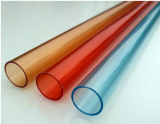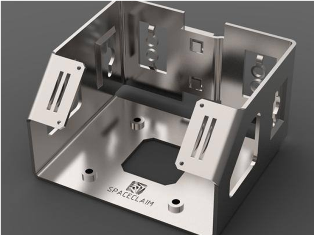Viewmold company provides injection molding services for your part with PP plastic material.
Drying |
Not normally necessary if proper storage is used |
Melt Temperature |
220 - 280 C (428 - 536 F); not to exceed 280 C |
Mold Temperature |
20 - 80 C (68 - 176 F); suggested: 50 C (122 F) The crystallinity level is determined by the mold temperature. |
Material Injection Pressure |
Up to 180 MPa |
Injection Speed
Typically, fast injection speeds are used to minimize internal stresses; if surface defects occur, slow speed molding at a higher temperature is preferred. Machines capable of providing profiled speed is highly recommended.
Runners and Gates
In the case of cold runners, typical diameters range from 4 - 7 mm. Full round sprues and runners are recommended. All types of gates can be used. Typical pin gate diameters range from 1 - 1.5 mm, but diameters as low as 0.7 mm may be used. In case of edge gating, the minimum gate depth should be half the wall thickness and the width should be at least double the thickness. Hot runners can readily be used for molding PP.
Chemical and Physical Properties
PP is produced by the polymerization of propylene using stereospecific catalysts. Mainly, isotactic PP is produced (the methyl groups lie on one side of the carbon chain). This linear plastic is semicrystalline because of ordered molecular structure. It is stiffer than PE and has a higher melting point. The PP homopolymer becomes very brittle at temperatures higher than 0 C (32 F) and for this reason, many commercially available grades are random copolymers with 1 - 4% ethylene or block copolymers with higher ethylene content. Copolymers have a lower heat distortion temperature (approximately 100 C / 212 F), less clarity, gloss, and rigidity, but greater impact strength. The material becomes tougher as the ratio of ethylene increases. The Vicat softening point is approximately 150 C (302 F). Because of high levels of crystallinity, the surface hardness and scratch resistance is higher for these materials.
PP does not have environmental stress cracking problems. PP is usually modified by addition of glass fibers, mineral fillers, or thermoplastic rubbers. The MFR of PP ranges from 1 to 40; lower MFR materials have better impact strength but lower tensile strength. The copolymer is tougher than the homopolymer of the same MFR. The viscosity is more shear and temperature sensitive than PE.
Due to crystallinity, the shrinkage is relatively high (order of 0.018 - 0.025 mm/mm or 1.8 - 2.5%). The shrinkage is more uniform than PE-HD (the difference in flow and cross-flow shrinkage is typically less than 0.2%). Addition of 30% glass reduces the shrinkage to approximately 0.7%.
Both homopolymer and copolymer PP offer excellent resistance to moisture and good chemical resistance to acids, alkalis, and solvents. However, it is not resistant to aromatic hydrocarbons such as benzene, and chlorinated hydrocarbons such as carbon tetrachloride. It is not as resistant to oxidation at high temperatures as PE.
If you need to look for more plastic resin injection molding processing condition, could you please click it.The following is other plastic processing condition:
ABS injection molding processing condition,
HDPE injection molding processing condition,
LDPE injection molding processing condition,
PA12 injection molding processing condition,
PA6 injection molding processing condition,
PBT injection molding processing condition,
PC-ABS injection molding processing condition,
PC-PBT injection molding processing condition,
PEI injection molding processing condition,
PETG injection molding processing condition,
PMMA injection molding processing condition,
POM injection molding processing condition,
PPE injection molding processing condition,
HDPE injection molding processing condition,
PP injection molding processing condition,
PS injection molding processing condition,
PVC injection molding processing condition,
SAN injection molding processing condition,




